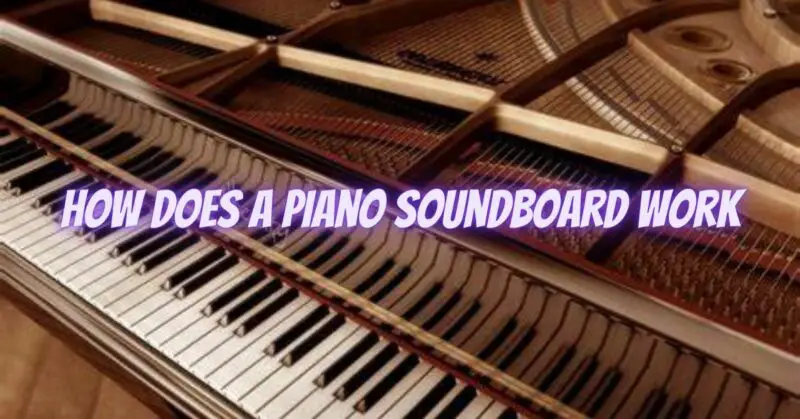The enchanting sound of a piano is made possible by a complex interplay of various components, and at the heart of this symphony lies the soundboard. The soundboard, a large wooden structure, plays a pivotal role in amplifying and enriching the vibrations produced by the strings. In this article, we will delve into the inner workings of a piano soundboard and explore how it contributes to the instrument’s distinctive and resonant tones.
The Resonant Power of the Soundboard:
The soundboard, typically made of spruce wood, is carefully crafted to maximize its resonance and tonal qualities. It is strategically positioned horizontally within the piano’s body, parallel to the floor, directly beneath the strings. Its large surface area allows it to effectively capture and transmit the vibrations generated by the strings.
Amplification through Vibrations:
When a pianist strikes a key, it sets in motion a series of events. The key’s movement causes a mechanism to activate, resulting in a small hammer striking the corresponding string(s). The impact of the hammer creates vibrations within the strings. These vibrations, initially relatively quiet, are then transmitted to the soundboard.
Sympathetic Resonance:
As the vibrations reach the soundboard, a phenomenon known as sympathetic resonance occurs. The soundboard, being an elastic and resonant wooden structure, responds to the vibrations by vibrating sympathetically at the same frequency. This interaction between the vibrating strings and the soundboard amplifies the sound produced by the strings, giving it depth, volume, and richness.
Bridge and Rib Connections:
To facilitate the transmission of vibrations, the strings are firmly attached to the soundboard through a network of bridges. These bridges serve as the connection points, transmitting the vibrations from the strings to the soundboard. Additionally, wooden ribs, thin strips of wood, are strategically placed on the underside of the soundboard to provide reinforcement and support, ensuring its structural stability.
Resonance and Harmonic Overtones:
The soundboard’s resonant properties contribute to the creation of harmonic overtones, enriching the piano’s sound. As the soundboard vibrates, it not only amplifies the fundamental frequency of the strings but also enhances the presence of harmonics. These harmonics are additional frequencies that resonate alongside the fundamental tone, creating a complex and sonorous sound.
Interaction with Piano Casing:
The piano casing plays a role in shaping the sound produced by the soundboard. The casing, made of wood or other materials, acts as an enclosure, directing and projecting the sound outward. The soundboard’s vibrations are influenced by the resonant qualities of the casing, further shaping the tonal characteristics of the piano.
Maintenance and Care:
Given the critical role the soundboard plays, proper maintenance is essential to ensure its optimal performance. Maintaining a stable environment with controlled humidity levels helps prevent warping or cracking of the soundboard. Regular tuning and periodic inspections by a professional piano technician can help identify any issues with the soundboard or other components and ensure they are addressed promptly.
Conclusion:
The piano soundboard is a remarkable component that transforms the vibrations of the strings into the resonant and captivating tones we associate with the instrument. Its ability to amplify, enrich, and resonate sympathetically with the strings elevates the piano’s sound to extraordinary heights. Understanding the inner workings of the soundboard allows us to appreciate the intricacies involved in crafting the mesmerizing music that emanates from this iconic instrument.


